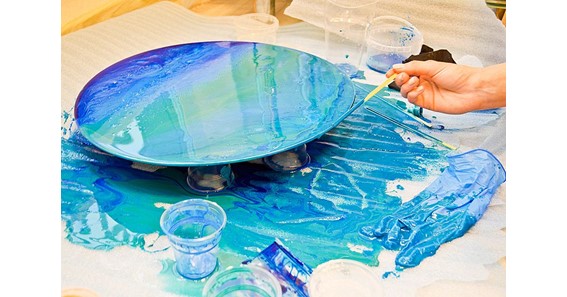Are you looking to learn more about acrylic resin? It’s a versatile material with various uses, from making jewelry, painting, sculpture, etc. This comprehensive guide has crucial information about acrylic resin. From its versatility to its unique properties, you will realize why acrylic resin has become a popular choice for many projects. Read on to discover everything you need to know about this remarkable material.
What is Acrylic Resin?
Acrylic resin is a plastic material often used to create sculptures, coatings, and other products. It is a versatile material with many applications, including jewelry making, woodworking, pottery, and many more.
This material comprises monomer and polymer components. Monomers are small molecules that link to form larger molecules known as polymers.
In addition, you can adjust these two components to achieve different levels of hardness and durability. Acrylic resin is available in various colors and finishes, making it an excellent choice for various creative projects.
What are the Benefits of Using Acrylic Resin?
There are several benefits of using acrylic resin. It’s lightweight, easy to work with, and has a crystal-clear finish that provides unparalleled protection from the elements. Also, it’s durable, resistant to yellowing, and unaffected by UV rays.
Another notable benefit of using acrylic resin is its ability to preserve the look of your materials. With its clear finish, it will protect anything underneath it without changing its color or texture. So, you can maintain a natural wood look or the beauty of a vibrant paint job without sacrificing its features.
Acrylic resin is also resistant to damage caused by moisture and humidity, making it an excellent choice for outdoor projects.
The other significant benefit of using acrylic resin is its flexibility in adding custom touches to your project. Depending on your needs, you can use different dyes to tint the polish and make it look more vibrant or subtle. Also, you can add glitter or mica powder to the resin to give it an interesting effect. With these customization options, you can truly make your project unique.
Click Here – Get Cozy: The Ultimate Buying Guide to Chinese Slippers
Tips and Tricks for Working with Acrylic Resin
Since acrylic resin is a versatile material that works in many crafts and projects, working with it can be challenging. But here are some tips and tricks to help you get the most out of your acrylic resin projects:
- Prepare your surface: Ensure your surface is clean and free from debris before pouring your resin. This action ensures that your resin sets appropriately and doesn’t become distorted during the curing process.
- Mix thoroughly: Before using your acrylic resin, mix it for at least two minutes to ensure a smooth finish.
- Avoid bubbles: To avoid bubbles in your finished product, remove any trapped air in the resin by tapping the sides of your mold or container. You can also use a hairdryer on low heat to remove air bubbles.
- Temperature matters: Acrylic resin works in temperatures between 70°F and 80°F. A high temperature will cause the resin to cure too quickly, while too low of a temperature can cause it to take longer to fix.
- Allow enough drying time: The acrylic resin requires at least 24 hours to dry, so plan and give your project enough time to set before handling it.
- Wear gloves: Be sure to wear gloves when working with acrylic resin, as it is toxic when inhaled or ingested.
These tips and tricks will create fantastic pieces with your acrylic resin projects if you follow them.
How do I Remove Acrylic Resin?
Removing acrylic resin from surfaces can be a challenging and laborious process. The type of material used to create the surface will determine the best way to remove it.
For hard surfaces, such as metal or glass, you can use rubbing alcohol or a solvent to break down the resin. Also, you will need to scrape off the resin with a blunt object for porous surfaces, such as wood or fabric.
If that doesn’t work, try using a warm washcloth or a putty knife. Additionally, you can try heating the resin to soften it and then scrape it with a plastic putty knife. To be safe when working with any solvent or heat, wear protective gloves and work in a well-ventilated area.
Final Words
Acrylic resin is an incredibly versatile and robust material for various projects. It’s lightweight, easy to use, and long-lasting. Whether you’re a professional or a beginner, acrylic resin is an ideal choice for several applications. With simple tips and tricks, you can use acrylic resin to make beautiful and durable products that will last for years. For more information on Top SEO Agency please visit Pro SEO.
